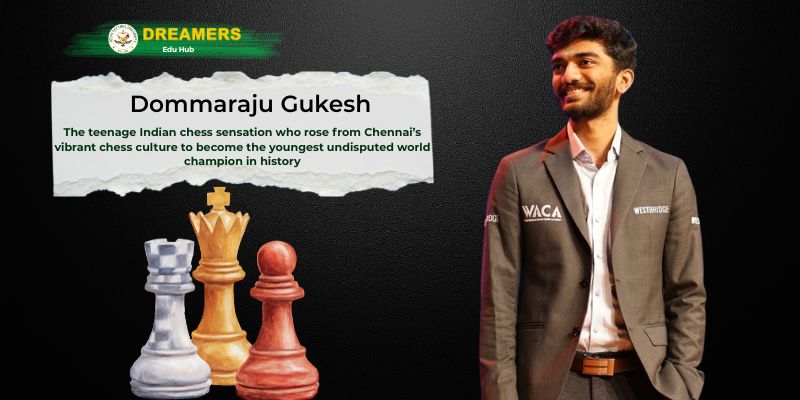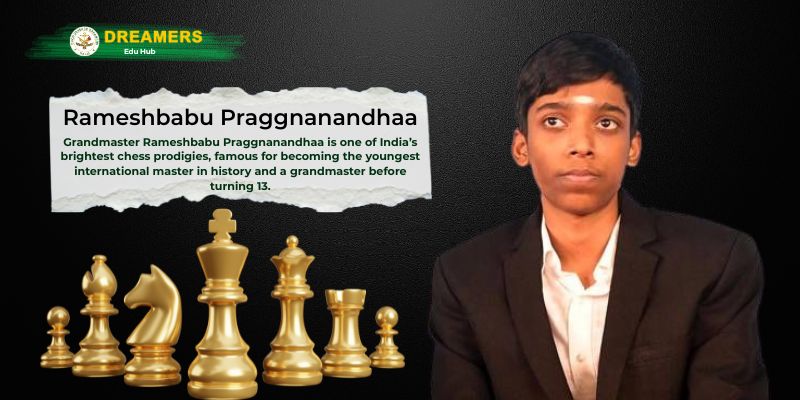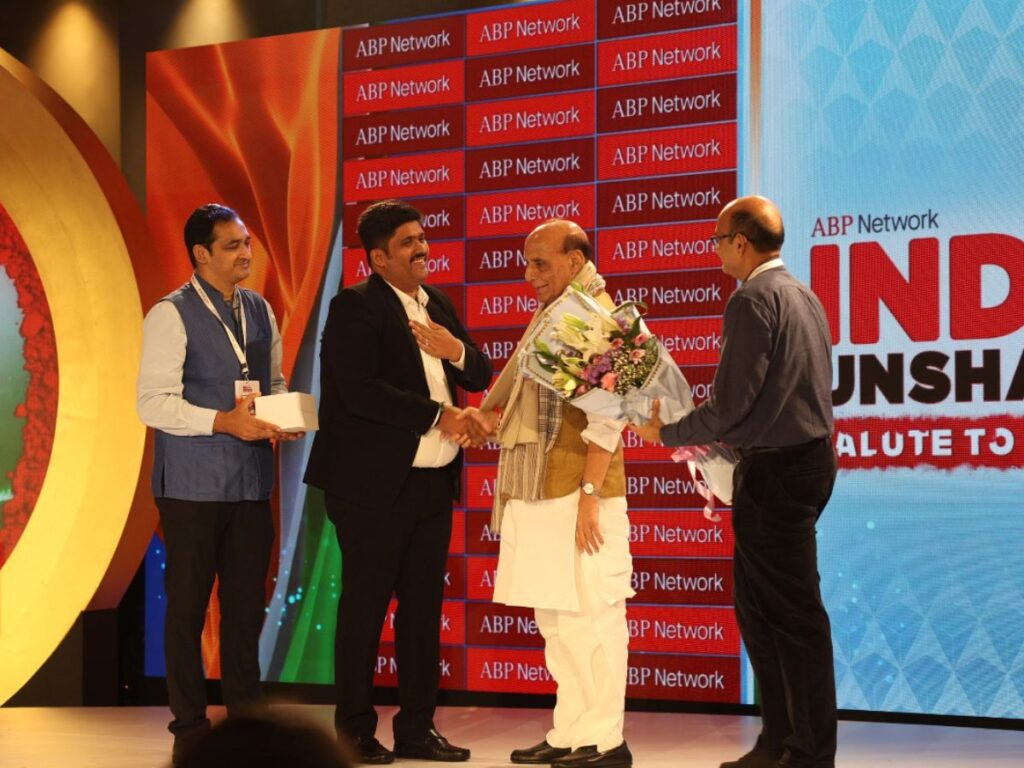In just a few years, Indian Chess has moved from being the land of one legend, Viswanathan Anand, to a country leading the global conversation in modern chess. A new generation of grandmasters, modern training systems and digital platforms has turned India from an underdog into a true chess superpower, with teenagers and young adults regularly challenging world champions.
This transformation is not a random rise. It is the result of decades of work by coaches, academies, federations and families, especially in states like Tamil Nadu. India now has a large number of grandmasters and many players in the world’s top rankings, which confirms its status as a long-term powerhouse in Indian Chess.
How India Became a Global Chess Powerhouse?
The journey of Indian Chess from isolated talents to a full ecosystem can be understood through a few key phases.
| Period / Phase | Key Milestone in Indian Chess | Impact on Indian Chess Growth |
|---|---|---|
| 1980s–2000s | Viswanathan Anand becomes world champion and global icon | Inspires a generation and creates belief that Indians can rule chess |
| 2010s | Rapid increase in titled players and national events | Builds a stronger competitive base across many states |
| 2020–2024 | Boom in online chess, Olympiad success and junior results | Brings new fans, more sponsors and sharper, data-based training |
| By mid-2020s | Dozens of Indian grandmasters and many in world top 100 | Confirms India as a global chess superpower |
These phases show how Indian Chess combined tradition, digital tools and strong coaching to create a deep talent pool, making the rise of players like Gukesh and Praggnanandhaa feel like the natural next step rather than a surprise.
Why Gukesh and Praggnanandhaa Symbolise the New Era?
Grandmasters Gukesh D and R Praggnanandhaa capture the spirit of this new era of Indian Chess. Both were born in Chennai, both became grandmasters around the age of twelve and both started beating elite players while still teenagers.
They represent a shift from India producing one exceptional star to producing a whole generation of world-class contenders. Gukesh has already become the youngest undisputed world champion in history, while Praggnanandhaa has beaten Magnus Carlsen multiple times and reached the World Cup final, standing among the world’s top-ranked players.
Together, they show that Indian Chess now has both depth and peak strength, with teenagers comfortably taking on the very best in the world.
Gukesh D – From Prodigy to World Champion

In the story of Indian Chess, Gukesh Dommaraju stands as a historic figure. Born in 2006 in Chennai, he rose from a talented schoolboy to the youngest undisputed world chess champion of all time, breaking one of the most respected records in chess history.
Gukesh’s path is a clear example of how the modern Indian system supports prodigies through strong family backing, specialised schools and professional coaching. The following table gives a quick biographical snapshot.
| Aspect | Detail |
|---|---|
| Full Name | Dommaraju Gukesh |
| Birth | 29 May 2006, Chennai, Tamil Nadu, India |
| Family Background | Father is an ENT surgeon, mother is a microbiologist |
| Started Chess | Around age 7, in Chennai’s rich chess environment |
| Grandmaster Title | Achieved at 12 years 7 months, among the youngest in history |
| World Champion | Became undisputed world champion at 18 years of age |
Early Life, Family Background and First Steps in Chess
Gukesh grew up in a professional, education-focused household in Chennai, with parents who understood the discipline required for excellence. This support allowed him to travel to events, work with experienced coaches and train seriously from a young age. Chennai, often called the “chess capital of India”, provided tournaments, sparring partners and role models that helped shape his early career and gave him a strong base inside Indian Chess.
Becoming One of the Youngest Grandmasters in History
By his early teens, Gukesh had already collected strong performances across youth and open events. At 12 years and a few months, he completed his final norm and became one of the youngest grandmasters in chess history. This achievement placed him firmly at the front of the global conversation about prodigies and underlined how far Indian Chess had advanced in nurturing young talent.
Olympiad Medals, 2700+ Breakthrough and Climbing the World Rankings
In the following years, Gukesh’s progress was both steady and spectacular. He collected important results at Olympiads, strong open tournaments and elite round-robins, and crossed the 2700 Elo mark as a teenager. Very few players in history have reached this rating band so early. Each new milestone showed that his world champion potential was real and not just a prediction, and that Indian Chess now had a player who could consistently fight at the very top.
Winning the Candidates and the World Championship: Youngest World Champion
A turning point came when Gukesh won the FIDE Candidates Tournament, becoming the youngest player ever to win this event. The Candidates victory gave him the right to challenge the reigning world champion and led to a historic world title match. He later won this match and became the youngest undisputed world chess champion, bringing the crown back to India and opening a completely new chapter for Indian Chess.
Playing Style, Signature Strengths and Famous Wins
Gukesh is known for deep calculation, calm defence and strong endgame technique. His style often mixes classical understanding with sharp tactical awareness and a very strong will to win. Important victories against elite opponents in Olympiads, classical super events and the World Championship match have shown his ability to handle pressure at the highest level. His rise reinforces the idea that Indian Chess now produces not just solid grandmasters but also world-beating champions.
R Praggnanandhaa – Fearless Challenger of World Champions

If Gukesh represents the current world champion side of Indian Chess, R Praggnanandhaa symbolises fearless challenge and creative energy. Also from Chennai, he became the youngest international master in history and later one of the youngest grandmasters of all time.
Praggnanandhaa’s rise is marked by famous victories over Magnus Carlsen and a historic run to the World Cup final, which secured his place in the Candidates and confirmed his status as a global star.
| Aspect | Detail |
|---|---|
| Full Name | Rameshbabu Praggnanandhaa |
| Birth | 10 August 2005, Chennai, Tamil Nadu, India |
| Early Chess Start | Learned chess in early childhood with strong family support |
| Youngest International Master | Became the youngest IM in history at about 10 years of age |
| Grandmaster Title | Achieved at 12 years 10 months, among the youngest in history |
| Major Breakthrough | Reached the World Cup final and qualified for the Candidates |
Childhood, Training Ecosystem and Support System
Praggnanandhaa grew up in a chess-loving environment, with strong support from his parents and close connection to Chennai’s coaching network. His sister, Vaishali, is also a top-level player, which turned chess into a family journey rather than a solo effort. The training ecosystem around him reflects the depth of Indian Chess, where multiple talented juniors push one another to improve and learn.
Breaking Records as the Youngest International Master
At the age of just 10, Praggnanandhaa became the youngest international master in history, a record that showed how early his talent had matured. This moment signalled that another extraordinary prodigy had emerged from Indian Chess, capable of following or even surpassing earlier legends. The title of international master at such a young age gave him confidence and visibility on the world stage.
Beating Magnus Carlsen and Reaching the World Cup Final
Praggnanandhaa reached global headlines when he defeated Magnus Carlsen in rapid events and then again in other formats. These wins showed that he could challenge the very strongest players on equal terms and that Indian Chess had a fearless young fighter at the top.
His run to the FIDE World Cup final, where he defeated several elite grandmasters and secured a Candidates spot, is widely seen as one of the greatest achievements by a teenager in modern chess. Even though he did not win the final, the journey itself marked a historic milestone and dramatically raised the profile of Indian Chess worldwide.
Candidates, Super Tournaments and Grand Chess Tour Success
After the World Cup breakthrough, Praggnanandhaa became a regular presence in elite round-robin tournaments and major open events. Participation in the Candidates, Grand Swiss events and super tournaments ensured that he gained experience against the very best. By the mid-2020s, he had firmly established himself among the top players in the world, complementing Gukesh at the peak of Indian Chess and giving India a second major contender in every top event.
Praggnanandhaa’s Style: Dynamic Preparation and Fighting Spirit
Praggnanandhaa is widely admired for dynamic openings, sharp calculation and an intense fighting spirit. He often chooses ambitious lines with both colours, aiming for rich, double-edged positions rather than quiet draws. This approach fits perfectly with the bold, confident identity that Indian Chess has developed in recent years, where young players are not afraid to push for wins against any opponent. His games are frequently used as study material by coaches and fans who want to understand modern attacking chess.
Twin Engines of Indian Chess: Gukesh and Praggnanandhaa Together
The stories of Gukesh and Praggnanandhaa are deeply interconnected. Both come from Chennai, both trained in an overlapping ecosystem and both rose during a period when Indian Chess exploded in strength. Their parallel journeys constantly push each other and raise the overall standard of the national team.
Growing Up in the Same City: Chennai’s Unique Chess Culture
Chennai’s reputation as the “chess capital of India” comes from decades of structured coaching, regular tournaments and the legacy of Viswanathan Anand. Local academies, school programmes and supportive policies from Tamil Nadu have created a city where chess is a mainstream activity. Gukesh and Praggnanandhaa grew up inside this culture, giving Indian Chess two world-class products from the same region and showing how powerful a strong local ecosystem can be.
Training Systems, Coaches and the Role of Academies
Both players benefited from modern training systems: engine-assisted preparation, online practice, international tournaments and guidance from top-level mentors. Academies and personal coaches played a major role in shaping their opening repertoires, calculation habits and psychological strength. This proves that Indian Chess has moved from isolated talents to a complete professional structure that can repeatedly produce elite players.
Rivals on the Board, Teammates for India
On the board, Gukesh and Praggnanandhaa are natural rivals, often competing for top spots in the same events and sometimes facing each other in crucial games. In team events like Olympiads and national squads, they become powerful teammates, giving Indian Chess a level of depth that very few countries can match. This combination of rivalry and partnership creates constant motivation and ensures that both continue to grow.
Gukesh vs Praggnanandhaa: Comparing Achievements and Playing Styles
A simple comparison highlights how these two stars complement each other within Indian Chess.
| Feature | Gukesh D | R Praggnanandhaa |
|---|---|---|
| Birth | 29 May 2006, Chennai | 10 August 2005, Chennai |
| Record Highlight | Youngest undisputed world chess champion | Youngest player to reach the World Cup final |
| Title Milestone | Grandmaster at 12 years 7 months | Grandmaster at 12 years 10 months |
| Signature Strength | Deep calculation, strong defence, excellent endgames | Dynamic openings, sharp tactics, high fighting spirit |
| Role in Indian Chess | Reigning world champion and symbol of peak achievement | Elite contender and constant challenger to world champions |
Both are essential to the future of Indian Chess, giving the country both a reigning world champion and a fearless challenger in the same generation.
Impact on India’s Chess Ecosystem and Young Aspirants
The twin success stories of Gukesh and Praggnanandhaa have changed how families, schools and sponsors look at Indian Chess. Chess academies see higher enrolments, more schools add chess to their activities and sponsors recognise the sport’s global reach. The ecosystem around chess in India is now wider, stronger and more professional than ever before.
More Kids, More Tournaments: Chess Boom Across Indian Cities
The achievements of these young grandmasters have inspired children from big cities as well as smaller towns to take chess seriously. Regular district, state and national tournaments now see record participation, and online events also attract large numbers. This wave of interest ensures that Indian Chess will continue to produce strong players in the coming decades, with many aspiring to follow in the footsteps of Gukesh and Praggnanandhaa.
Sponsorships, Online Platforms and Professional Pathways
With world-class results coming from Indian Chess, sponsors and online platforms have increased their involvement. Streaming, digital coaching, online training camps and international events hosted in India create clear professional pathways for talented juniors. The success of players like Gukesh and Praggnanandhaa demonstrates that a full-time career in chess is now realistic for many more Indians than before, provided there is hard work and planning behind it.
How Their Success Inspires School Students and Parents
For school students, seeing teenagers from similar backgrounds defeat world champions or hold the world title creates a powerful example. Parents who once saw chess only as a hobby now recognise its educational value and potential as a profession. As a result, Indian Chess enjoys stronger social support, which is just as important as coaching or technology. Many families now actively search for good coaches, tournaments and time-management plans to blend chess with academics.
Media Attention, Social Media Fans and Making Chess “Cool”
Media coverage and social media have turned Gukesh and Praggnanandhaa into widely recognised faces. Interviews, documentaries and live commentary have made chess more visible and exciting for the general public. This attention helps Indian Chess move beyond niche circles and become part of mainstream sports culture. With a world champion, a fearless challenger and a growing base of talented juniors, Indian Chess today looks ready not only to shape the future of the sport but also to inspire millions of young minds on and off the board.
Frequently Asked Questions (FAQs)?
Q.1: Why are Gukesh and Praggnanandhaa important for Indian Chess?
They show that Indian Chess is no longer about one legend but a full new generation at the top. Both became grandmasters very young and regularly fight against world champions. Their success proves that India can consistently produce elite players and world title contenders.
Q.2: Who is stronger right now, Gukesh or Praggnanandhaa?
Gukesh currently stands out as the youngest undisputed world champion, which gives him a special place in Indian Chess. Praggnanandhaa, however, is also among the world’s elite and has big wins against top players, including Magnus Carlsen. Both are extremely close in strength and push each other to improve.
Q.3: How did Chennai become the hub of Indian Chess?
Chennai developed strong chess academies, regular tournaments and a culture shaped by Viswanathan Anand’s success. Many families in the city treat chess seriously, supporting children with coaching and event travel. This combination created an ecosystem where players like Gukesh and Praggnanandhaa could grow to world level.
Q.4: What can young players learn from the journeys of Gukesh and Praggnanandhaa?
Their careers show the value of early start, disciplined practice and consistent participation in tournaments. They also highlight how important family support, good coaching and balanced schooling are in modern Indian Chess. Most importantly, they prove that age is not a barrier to challenging the very best.
Q.5: How have Gukesh and Praggnanandhaa changed the image of chess in India?
Their achievements have made chess more visible on television, news portals and social media. Many children now see chess as exciting, modern and even “cool”, not just a quiet classroom game. This new image has helped Indian Chess reach more schools, sponsors and aspiring players across the country.
Recent Blogs
Important Organizations and Their HQ (Headquarters)





























